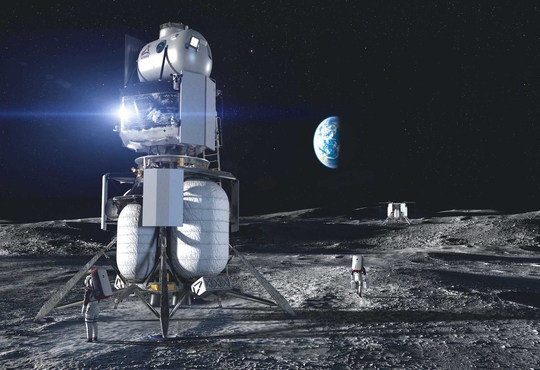
NASA Shows 'Green' Fuel Could Power Future Space Missions
CIOReviewIndia Team | Friday, 21 August 2020, 13:24 IST
 Replacing toxic hydrazine, the coming space mission will indulge a less effective propellant or fuel. NASA has found the compatible technologies are designed to support this initiative.
Replacing toxic hydrazine, the coming space mission will indulge a less effective propellant or fuel. NASA has found the compatible technologies are designed to support this initiative.
The previous year, the US space agency launched the Green Propellant Infusion Mission(GPIM) for testing the fuel and compatible propulsion system in space for the very first time.
NASA stated, “This mission, which is now nearing completion, has proved that the "green" propellant and propulsion system work as intended, demonstrating both are practical options for future missions.”
Tim Smith, GPIM Mission Manager, NASA’s Marshall Space Flight Center in Huntsville, Alabama, said, “This is the first time in 50 years NASA tested a new, high-performing monopropellant in space.” It also stated, “It has the potential to supplement or even replace hydrazine, which spacecraft have used since the 1960s.”
For testing a monopropellant, the GPIM mission is set with a chemical propellant for burning. This chemical propellant can burn itself without any requirement from a separate oxidizer. The chemical is called Advanced Spacecraft Energetic Non-Toxic (ASCENT).
The chemical propellant is invented by the US Air Force Research Laboratory at the Edwards Air Force Base in California.
Paving the way for NASA’s acceptance of the new fuel for upcoming missions, GPIM’s successful demonstration of the propellant made it possible.
Upcoming NASA missions will use the less toxic in the Lunar Flashlight.
Providing clear-cut information about the presence of water deposits inside craters, the aims of small spacecraft, will help in launching a secondary payload on Artemis I, the first integrated flight test of NASA's Orion spacecraft and Space Launch System (SLS) rocket.
ASCENT is regarded ‘green’ despite being pink coloured due to the significantly less toxicity when compared to hydrazine. It requires protective suits and rigorous propellant loading processing methods.
Allowing spacecraft for traveling into distant places in the universe, or operate longer without using much propellant in the tank, ASCENT will give optimized performance level.
Approaching near end, GPIM mission spacecraft has started a series of deorbit burns.
In approximation, seven burns will decrease the orbit to 180 kilometres and propellant tank will get depleted.
The small spacecraft will burn up in the Earth’s atmosphere with re-entry in late September.
CIO Viewpoint
Digital Disruption - To Drive Next Wave Of...
By Jatinder Bansal, AVP & Head IT, ReNew Power Ventures Ltd
IT Services Outsourcing - Challenges to Conquer
By Umasankar Pandurangan, AGM- IT, HPCL- Mittal Energy Limited
Hadoop Uncovering Hidden Patterns to Make...
By Priyadarsanie Ramasubramanian, Head - Engineering and Technology, Tesco
CXO Insights
What is SF6 and why is it important?
By Guilherme Susteras, IEEE Senior Member
Unlocking Growth Via Digitalization Of The...
By Shikhar Gupta, Director, PwC
From Power to Lifestyle - The Future of Solar...




.jpg)
.jpg)




